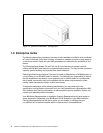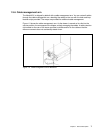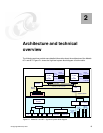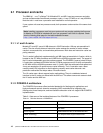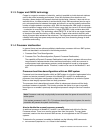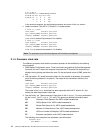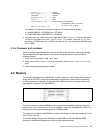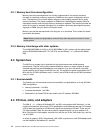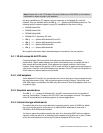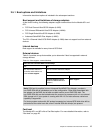
Chapter 2. Architecture and technical overview 11
2.1.3 Copper and CMOS technology
Copper is a superior conductor of electricity, making it possible to shrink electronic devices
even further while increasing performance. It has less resistance than aluminum and,
therefore, allows designs that transmit electrical signals faster. However, it does not mix as
well with silicon, the base material of semiconductor chips. IBM researchers found a way to
put a microscopic barrier between the copper and silicon in a way that actually reduced the
number of steps needed to complete a chip. With this development, IBM is able to squeeze
down the widths of copper wires to the 0.2-micron range from the current 0.35-micron widths
- a reduction far more difficult for aluminum. A single POWER3-II chip contains about 400
meters of copper wiring. This technology, called CMOS 7S, is the first to use copper instead
of aluminum to create the circuitry on silicon wafers. Copper wires conduct electricity with
about 40 percent less resistance than aluminum. That improves processor performance and
reliability while using less power and producing less heat, thus conserving energy for both
operations and cooling.
2.1.4 Processor deallocation
In general, there are two options available to deallocate a processor within an SMP system,
which are described in more detail in the following sections:
1. Processor Boot Time Deconfiguration
2. Processor Run-Time Deconfiguration (Dynamic Processor Deallocation)
The capability of Dynamic Processor Deallocation is only active in systems with more than
two processors, because device drivers and kernel extensions, which are common to
multi-processor and uniprocessor systems, would change their mode to uniprocessor
mode with unpredictable results. Therefore, it could not be used in the Models 6C1 and
6E1.
Processor boot time deconfiguration within an SMP system
Processor boot time deconfiguration within an SMP system is a function implemented in the
system and service processor firmware of the Models 6C1 and 6E1 for deallocating a
processor from the system configuration at boot time. The objective is to minimize system
failure or data integrity exposure due to a faulty processor.
The processor that is deconfigured remain offline for subsequent reboots until the faulty
processor hardware is replaced. This function provides the option for a user to manually
deconfigure or re-enable a previously deconfigured processor using the Service Processor
menu.
How to disable the second processor manually
A additional processor in Models 6C1 and 6E1 can be disabled only within the Service
Processor menus. There is no need to remove them from the system. The cpu_state
command, used on the micro-channel SMP servers, is not supported on the PCI-based
systems.
To determine if a processor is enabled or disabled, use the following AIX® commands:
sar command (requires bos.acct fileset to be installed):
Note: Processor cards only can physically be removed when the power is turned off to the
entire system.
If the system processor in slot 1 (P1-C1) has been deconfigured by the system, the service
processor will prevent the system from booting.




